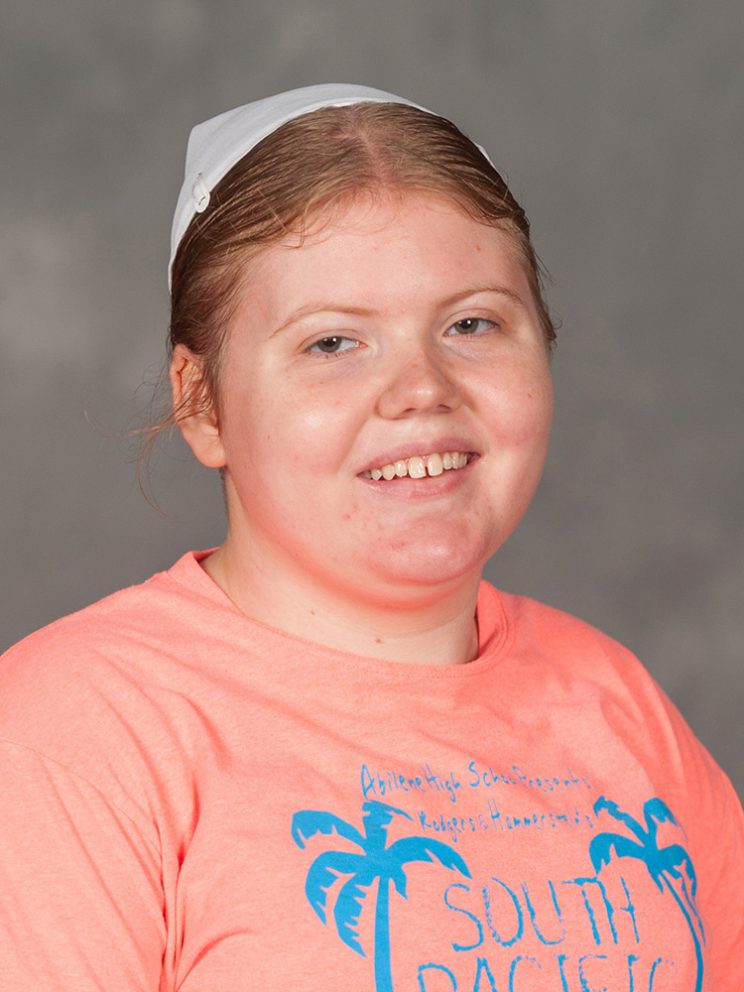Words Alive! Writing Contest Winner: Grace Allen (Research Essay)
“The Misunderstood Child”
 Bang! Bang! Bang! The sound of Maria’s head could be heard throughout the drafty farm house. When asked what was wrong she just screamed. Her foster mother, Tammie Myers, eventually figured out that she was mad because she could not dress a Barbie. At the same time as Maria’s horrific reaction to something so simple, Rose acted like she wanted to cut herself as she ran her index finger across her opposite wrist. Maria is three. Rose is four. Maria has Disinhibited Social Engagement Disorder (DSED) while Rose has a similar psychological disorder, Reactive Attachment Disorder (RAD). Both children were severely abused and neglected during infancy and early childhood. Many of the behaviors and symptoms of DSED and RAD are similar, while others are polar opposites, and none of which the general population understands or takes seriously.
Bang! Bang! Bang! The sound of Maria’s head could be heard throughout the drafty farm house. When asked what was wrong she just screamed. Her foster mother, Tammie Myers, eventually figured out that she was mad because she could not dress a Barbie. At the same time as Maria’s horrific reaction to something so simple, Rose acted like she wanted to cut herself as she ran her index finger across her opposite wrist. Maria is three. Rose is four. Maria has Disinhibited Social Engagement Disorder (DSED) while Rose has a similar psychological disorder, Reactive Attachment Disorder (RAD). Both children were severely abused and neglected during infancy and early childhood. Many of the behaviors and symptoms of DSED and RAD are similar, while others are polar opposites, and none of which the general population understands or takes seriously.
 Understanding what causes DSED and RAD can make addressing the behaviors more manageable for caregivers. Children with DSED and RAD can be very difficult to parent as it is not “normal” parenting. As their mother explains, “We’ve learned a lot about the diagnoses as well as on how to parent differently, and there is much more to learn on how to parent differently (Myers).” These children can have a wide range of effects on families and communities. Often children with DSED and RAD are those who are in the foster system or have been adopted. Children with these diagnoses and other attachment issues need significantly more nurturing than may be considered “normal” for their age. Something to keep in mind however, is that a foster or adoptive parent is often providing “replacement” experiences for these children, but it is occurring when a child’s brain is much more difficult to mold than when the abuse most likely occurred. Therefore, a child will need even more bonding experiences to help them develop attachments. Physical contact is very important in nurturing a child and forming attachments, but physical contact can often be associated with physical or sexual abuse in maltreated children, so the child’s response to this contact must be closely monitored by caregivers and modified appropriately (Perry).
Understanding what causes DSED and RAD can make addressing the behaviors more manageable for caregivers. Children with DSED and RAD can be very difficult to parent as it is not “normal” parenting. As their mother explains, “We’ve learned a lot about the diagnoses as well as on how to parent differently, and there is much more to learn on how to parent differently (Myers).” These children can have a wide range of effects on families and communities. Often children with DSED and RAD are those who are in the foster system or have been adopted. Children with these diagnoses and other attachment issues need significantly more nurturing than may be considered “normal” for their age. Something to keep in mind however, is that a foster or adoptive parent is often providing “replacement” experiences for these children, but it is occurring when a child’s brain is much more difficult to mold than when the abuse most likely occurred. Therefore, a child will need even more bonding experiences to help them develop attachments. Physical contact is very important in nurturing a child and forming attachments, but physical contact can often be associated with physical or sexual abuse in maltreated children, so the child’s response to this contact must be closely monitored by caregivers and modified appropriately (Perry).
Disinhibited Social Engagement Disorder and Reactive Attachment Disorder have similar causes but very different symptoms, but regardless of the set of symptoms or the diagnoses, the general population does not take mental illness in children seriously. There is still a vast array of information to be learned in the area of developmental psychology and the effects of abuse and trauma on the developing brain, but, outside of the science, there is so much that can be learned from those who, through no fault of their own, have faced more in a few years than many people will face in a lifetime. Society has a vast amount to learn about the effects of abuse and how to handle the children that are the results of it. The abuse of children and its effects are often not talked about to avoid labeling a child, but providing a child with a proper diagnosis does not define them, it simply helps families, medical professionals, and communities to be able to better understand and help the weakest, most victimized among them. Instead of judging courageous parents for “not parenting right” or “being too strict or lenient with a child” people need to allow foster and adoptive parents to explain their child’s diagnoses. Every person, young or old, is priceless, and should be treated as such, regardless of their history. Everyone has a story, but for some people, tragedy strikes way too soon, leaving them with the detrimental, but surmountable effects of it.




